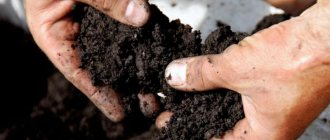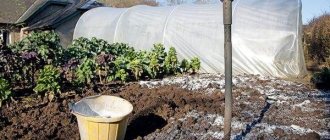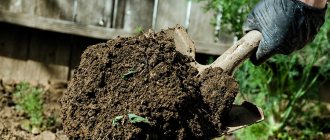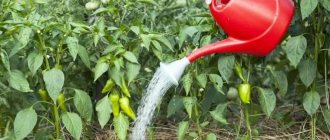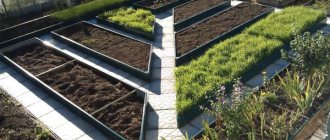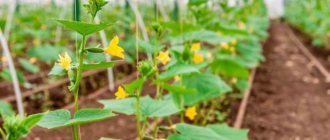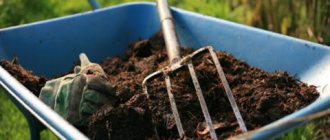Why do we need nitrogen fertilizers for cucumbers?
The effect of nitrogen fertilizers on cucumbers is difficult to overestimate. Timely introduction of fertilizing promotes stable growth and development of plants.
The role of nitrogen in their cultivation
Nitrogen is the main element involved in plant metabolism.
Almost all basic physiological processes in plant and animal organisms occur with the participation of nitrogen molecules.
Why is its deficiency dangerous?
It is known that plants obtain nutrients from the soil. If there is not enough nitrogen in the soil, plants will inevitably suffer from its deficiency.
Signs of nitrogen deficiency: leaves and stems are thin, leaves are yellowing and weakened, there are no ovaries, low yield.
Signs of a lack and excess of nitrogen in the soil with photos
Cucumbers are demanding on the chemical composition of the soil. If there is not enough nitrogen, vegetable plantings quickly react to this. The main signs by which it is determined that there is not enough macronutrient in the area, or that it is poorly absorbed by the roots of the grown plants:
- discoloration of foliage and fruits - they become light green;
- the formation of beak-like sprouts on the tops of green plants;
- yellowing of leaf blades at the bottom;
- cessation of development of stepsons, lashes stop developing.
If one of the signs is detected, the plants should be fed with a small amount of nitrogen-containing mineral or organic fertilizers and the reaction of the crop should be observed. Frequent applications can be harmful. Since excess nitrogen provokes the development of diseases. In soil compositions where this chemical compound predominates, the proliferation of fungi is activated. Also, excessive N concentration causes potassium starvation. And the lack of the last element (K) negatively affects the quality of the fruit.
For your information!
With a high concentration of nitrogen in the soil at the initial stages of crop development, an active increase in green mass occurs to the detriment of flowering and fruit formation.
Types of nitrogen fertilizers
Based on their origin, nitrogen fertilizers are divided into organic (organic) and mineral.
Organic
Organic fertilizers include silt, peat, bird droppings, manure, rotted plant remains, and green manure .
Silt is used to improve the quality characteristics of sandy soil. Before feeding cucumbers, the sludge must be spread in a thin layer and dried for three days. Next, it is poured around the stems in a thin layer no higher than 1.5 cm.
Peat is added to the soil directly during the preparation of the substrate for planting cucumber seedlings.
Bird droppings are used as fertilizer for watering plants. It is not recommended to use it in its pure form. Dilute in water in proportions of 1:5 and leave for several days, preferably in a barrel. The container is left in the greenhouse to maintain humidity. Before watering, dilute with water in proportions 1:9.
Manure is used as bush feeding. Fertilizer cannot be used in its pure form either. For feeding, rotted manure is often used, diluted with water in a ratio of 1:3.
Rotten remains of plants are used to add bushes. Mix with soil and sprinkle near the stems of the plant.
Green manure is added when digging the soil. They enrich the soil well with nitrogen compounds and accumulate moisture in the soil.
Mineral fertilizers
Nitrogen mineral fertilizers are characterized by a higher nitrogen content.
Urea
Urea (in other sources - carbamide) is considered the most effective nitrogen fertilizer in the process of growing vegetable and horticultural crops.
Urea has excellent solubility in water. It consists of 47% nitrogen available to plant organisms.
Ammonium sulfate
Ammonium sulfate is a mineral fertilizer containing nitrogen and sulfur . The composition is used not only in agro-industrial activities and horticulture, but also in the food and textile industries. Widespread use is associated with the low price and effectiveness of its use.
Ammonium sulfate is rich in useful microelements that lengthen the fruiting period. Use exclusively in dissolved form. The mineral provides the root system with useful components and does not react chemically with the soil.
Ammonium nitrate
Ammonium nitrate is small granules in the shape of a sphere, white or pink. It contains about 35% nitrogen and about 16% sulfur. Ammonium nitrate is used only for root feeding.
Attention ! Use in the form of a solution can lead to leaf burns and plant death. Cucumbers should be fertilized with ammonium nitrate with extreme caution, as nitrates may accumulate in the fruits.
Calcium nitrate
Calcium nitrate contains calcium (21%) and nitrogen in nitrate form (14–16%). It is otherwise called calcium nitrate. It appears as pure white crystals or granules.
Calcium nitrate is highly soluble. The convenience of its use is associated with the long-term preservation of beneficial properties. To extend shelf life, the fertilizer is kept in sealed packaging.
Sodium nitrate
Sodium nitrate consists of sodium and nitrogen. It is used during the growing season of cucumbers. Apply to the soil in the autumn, preferably in saline soil. It is strictly forbidden to use it in greenhouse conditions - this will lead to the death of the plants.
Determining what cucumbers lack: table
A deficiency of a certain element may be indicated by the type of soil in which the plant grows:
- Soddy-podzolic crops are characterized by a lack of phosphorus and nitrogen.
- Sandy and sandy loam soils are poor in potassium, boron and copper.
- In peaty, alkaline and carbonate soils, a lack of manganese may occur.
- Copper is usually found in small quantities in peat bogs.
Cucumbers quickly respond to a deficiency of micro- and macroelements by changing their appearance, which gardeners should pay attention to.
| In still | How to determine deficiency | What to do |
| Nitrogen | The green part of the plant brightens, the top takes on the shape of a “beak” (or hook), the lower leaves turn yellow, the upper ones become light green. The development of the cucumber plant slows down. The fruits look pointed and the roots die off. The scourges quickly become woody. | Regular and abundant watering, fertilizing with solutions of ammonium sulfate, urea or herbal infusion. |
| Potassium | Giant leaves and rapidly developing lashes appear on the plant, having a dark green color. Zelentsy take on a pear-shaped shape. The lower leaves become light. A yellow border appears on them. Brown burns often form on yellow foliage. | Feeding with a suspension of potassium sulfate or a solution infused with ash. |
| Phosphorus | There is inhibition of the growth of vines and leaves. Young tops are dark green with a purple tint, dry out quickly, and are smaller in size than the old ones. | Fertilizing with solutions of ammophos, diammophos or superphosphate. |
| Calcium | The tops become covered with light yellow spots, plant growth slows down, the apical buds dry out, the foliage becomes small, dark green, and the edges of the blades become rough. Old leaf blades take on a purple color. The roots gradually die off. The fruits decrease in size and become rough. | Liming the soil. |
| Magnesium | The appearance of light green blotches or spots on the leaf blades, the leaves turn yellow and crumble. The development of the bush slows down or stops. | The use of magnesium-containing lime fertilizers, for example, dolomite flour (CaCO3*MgCO3), or magnesium carbonate. |
| Copper | The tips of the leaf blades turn pale and white, curling into a tube, the tops become blue-green. | Feeding with a solution of copper sulfate or chelated copper compounds. |
| Zinc | The green part of the bush becomes brown in color, the leaves become transparent. | Application to the soil or spraying of foliage with a solution of zinc sulfate or its chelated compounds. |
| Bor | Dying of roots and growing points, deformation of leaves (take the shape of a spoon), stems and fruits, shedding of flowers. Reduced foliage strength. | Adding a solution of boric superphosphate or boric acid to the soil during the entire growing season. |
| Manganese | The leaves become covered with brown or yellow spots. | Feeding with solutions of manganese sulfate and manganese superphosphates. |
| Molybdenum | The leaf blades curl, the veins become pale, and the size of the flowers decreases. | Spraying the green part of the plant with a solution of molybdic acid or its salts (sodium molybdate or ammonium molybdate). |
| Iron | The leaves become light green, whitish, sometimes acquire a lemon color, growth points do not form, the tops turn brown and yellow. | The use of root and foliar fertilizing with a solution of iron sulfate or iron chelates. |
It is important to remember that cucumbers tolerate an excess of nutrients worse than their deficiency. Also, by its appearance, the plant will indicate the need for additional moisture. Lack of watering leads to the formation of a “waist” in cucumbers. In this case, the fruits look swollen at the end with pronounced hypotrophy at the base.
How to apply fertilizers correctly
Any fertilizer is used strictly according to the instructions. This is the only way minerals will help the plants and not harm the soil.
Urea is added in the spring during the digging process to a depth of 20 cm. Approximately 5–10 g of the substance per 1 m2.
One of the most effective methods of feeding is spraying cucumbers with urea. If you apply urea to the leaf, the fertilizer is absorbed much faster. When the first signs of nitrogen deficiency appear, this method is used.
Cucumber lashes should be treated with a solution diluted with water.
Composition for foliar feeding:
- 5 g urea;
- 10 liters of water.
In order not to burn the vegetative mass, the bushes are sprayed in a volume of 5 tbsp. l. for 10 liters of water. Cucumber leaves are processed in cloudy weather early in the morning.
Ammonium sulfate is introduced into the soil regularly 2-3 times a season. The first feeding is carried out 20 days after the appearance of the first shoots. Then apply to the soil every 2 weeks. Ammonium sulfate is added after watering or precipitation. 10–14 days before harvest, fertilizing is stopped.
Ammonium nitrate is most often used to fertilize a site in late autumn . When using it to feed bushes, be careful. Under no circumstances should you spray the leaves of cucumbers - this will cause burns and death of the plants. Typically, ammonium nitrate is used in root feeding and applied to the soil to a depth of 10 cm. Most often, this is done while digging up the site, until the plants are transplanted into the ground.
Sometimes ammonium nitrate is also used for watering cucumbers. This way the soil is enriched with nitrogen without harming the stems and leaves. Such fertilizing should be carried out carefully, especially after the start of fruiting and in the autumn.
Calcium nitrate is applied immediately before sowing cucumbers. This will allow the seeds to germinate quickly. During the germination period, the element is simply necessary for plants. Fertilizer can then be applied throughout the growing season.
Foliar feeding of cucumbers with calcium nitrate is carried out every 10 days. The first time the mineral is applied immediately after three or more leaves appear on the plants. Stop fertilizing cucumbers after the fruiting period begins.
To prepare the fertilizer, mix:
- 5 liters of water;
- 10 g calcium nitrate.
Calcium nitrate is stirred until completely dissolved and immediately begin spraying the cucumbers. This kind of feeding will prevent the appearance of rot on the roots. The use of fertilizer provides excellent protection against slugs and ticks.
General advice for gardeners
Tips for growing cucumbers from plant experts and farmers:
- Cucumbers, unlike tomatoes, love moisture . Water them abundantly and regularly. One adult bush requires at least 8-9 liters (garden bucket) of water once a week. Uneven and irregular watering causes a decrease in the quality and quantity of the crop.
- The root system of cucumbers is superficial ; it is dangerous to overdry or overwater the plant. To preserve moisture, the root space is mulched. A layer of mulch protects the crop from soil diseases and pests.
- The culture loves warmth and is especially sensitive to nighttime changes. The optimal night temperature is 18-20C, during the day – 25-30C. If for tomato seedlings it is useful to open the greenhouse at night so that they do not fatten, then for cucumbers this ventilation is painful - cooling is painful. In open plantings, seedlings are provided with shelter for the night.
- Cucumbers love light. The leaf plate is voluminous and prevents the penetration of sunlight. It is recommended to break off not only the lower leaves that touch the surface of the substrate, but also the cotyledons, the first leaves (especially in greenhouses). The upper leaves that shade the central stem are also trimmed.
- The vegetable needs a starting feed with nitrogen . Fertilizing with urea is the fastest and most affordable way to allow a cucumber to fill up and fully ripen.
- Cucumber prefers a slightly alkaline environment . The optimal acidity level is pH 6.5-7. It is also important not to alkalize the soil; excessive addition of ash is dangerous, as magnesium becomes inaccessible.
- You can’t trim the mustache of cucumbers , despite the newfangled advice from bloggers. The shoots of onions and garlic must be removed; the mustache of the cucumber performs its function of a strong fixation. Removing the whiskers injures the whip, attracting infections and diseases.
Signs of nutritional deficiency
Potassium starvation of cucumbers causes yellowing and wilting of the ovary . Potassium is responsible for the immune system of plants. The protective function decreases - vegetable crops begin to suffer from downy mildew, root rot, and late blight.
With a lack of magnesium, the “symptoms” are the same as with peronosporosis - interveinal chlorosis, leaf spotting , and the function of photosynthesis decreases.
Violation of calcium absorption causes blossom end rot - rotting of the fruits of zucchini and cucumbers.
Reasons for lack of elements
The main reason is that every year plants remove nutrient reserves from the soil. Also, nutritional microflora is depleted by washing away by seasonal precipitation and spring floods.
Increased doses of potassium fertilizers and violation of the feeding regime disrupt the normal assimilation (absorption) of nitrogen.
Important: for balanced nutrition of cucumbers, nitrogen fertilizers (ammonium nitrate or urea) are added when adding potassium.
With increased acidity of the soil (pH more than 7), magnesium becomes unavailable, and cucumbers experience magnesium starvation.
Summer residents often encounter a problem - the leaves of cucumbers, tomatoes, peppers, and eggplants curl, and the lower leaves turn yellow (not from the heat). Plants stop growing, and a lilac vein appears on the leaf blades of the middle tier. At the same time, complex fertilizers are regularly applied.
The reason is a violation of the absorption of nutrients, minerals become unavailable.
The solution is to apply citrate solutions through irrigation. Citrate solutions based on citric acid, simultaneously with the mobilization of phosphorus, affect the availability of potassium, iron, copper, calcium, magnesium, and zinc.
Reference . Citric acid is a source of energy for all living organisms; it dissolves hard-to-reach phosphates.
If complex fertilizing and mineral supplements do not produce results, use a working solution for watering cucumbers:
- 0.5-1 tbsp. l. citric acid;
- dissolve in 9-10 liters of clean water at room temperature;
- for each bush - 0.5-1 liters of solution;
- frequency of application – once every 2-3 weeks.
Attention! Citrate fertilizing eliminates the lack of phosphorus, potassium, essential microelements, and reduces the likelihood of blossom end rot in all vegetable crops.
Fertilizing
Often nitrogen fertilizers are introduced into the soil in early spring or autumn. The deadline for using fertilizers during the fruiting period is mid-July. This is mainly due to the effect of nitrogen on the growth of leaves and the entire above-ground part.
During the flowering period
When growing in greenhouses, it is recommended to use nitrogen fertilizers before the cucumbers bloom; this has a beneficial effect on the yield. To enhance the effect, fertilizer is applied evenly.
Nitrogen is especially necessary when the ovaries form and the growth of cucumber vines begins. During this period, cucumbers also need phosphorus, which is mixed with superphosphate.
The composition is prepared as follows:
- 10 liters of water;
- 15 g urea;
- 15 g double superphosphate.
The first treatment is carried out 10–12 days after planting. Then fertilizing is repeated every 10 days until new ovaries appear on the bush. After this, it is not recommended to use fertilizer.
During the fruiting period
It is best to fertilize the crop during the active growing season before the cucumbers begin to bear fruit. How to feed if they are already bearing fruit? In this case, it is necessary to maintain the same proportions as during the development of green mass. However, you should not overuse fertilizers. Excess nitrogen will lead to the accumulation of harmful substances.
Features of feeding cucumbers with nitrogen
Cucumber seedlings should be fertilized with extreme caution. At this time, there is a risk of overfeeding the plants, which will subsequently lead to their death.
In a greenhouse (greenhouse)
Nitrogen fertilizers for cucumbers in a greenhouse are used in pre-sowing soil preparation. Urea is applied with phosphorus and potassium fertilizers two weeks before planting seedlings or sowing seeds.
The solution is prepared as follows:
- 15 g urea;
- 30 g superphosphate;
- 20 g of potassium sulfate.
The resulting mixture is used per 1 m2. After strengthening the roots of the seedlings, the first root feeding with urea is carried out. Then fertilizers are applied every 1-2 weeks until fruit formation begins. It is especially important to feed cucumbers with urea during flowering and ovary formation.
In the open ground
Cucumber loves water, so in open ground it is necessary to water the plant frequently. Watering is carried out daily in the early morning or evening, before sunset.
Important ! If there is a lack of moisture, the fruits will be bitter. Watering should be especially intense during the formation of cucumbers.
Often manure or bird droppings diluted with water with the addition of ash are used for fertilizer. The solution is prepared in the following proportions:
- The container is filled 1/3 with manure or bird droppings and filled with water.
- The entire composition is mixed.
- The resulting solution is diluted with water in a ratio of 1:2, and bird droppings in a ratio of 1:3.
Another effective mineral nitrogen fertilizer for cucumbers:
- 10 liters of water;
- 10 g ammonium nitrate;
- 10 g superphosphate;
- 10 g potassium salt.
Root fertilizing with urea begins on the tenth day after germination of cucumbers. Feed every 10–14 days until fruiting.
Benefits of folk remedies
Folk remedies for feeding cucumbers (and other garden crops) are the favorite type of fertilizer for many summer residents and gardeners. a number of significant advantages to this
- Benefit. Many formula ingredients are cheap or at least not very expensive, and you probably already have some of them at home. There is no need to spend money on purchasing mineral or specialized preparations.
- Quality. At the preparation stage, you choose the ingredients yourself, and you can be sure that they are of high quality. The main thing is to make them according to the recipe, observing the dosage.
- Environmental friendliness. It is difficult to cause significant harm to plants and pollute the soil using folk remedies (unlike mineral fertilizers). However, if abused or used incorrectly, it can cause harm, so you need to proceed carefully.
- Efficiency. Many drugs, made correctly according to the prescription, are highly effective, and although, most likely, you will have to perform not one, but several feedings, the effect will soon come.
Note! If you properly feed cucumbers with folk remedies, you can stimulate growth, improve budding and flowering, accelerate fruit growth, prolong and improve fruiting, and make them more tasty.
